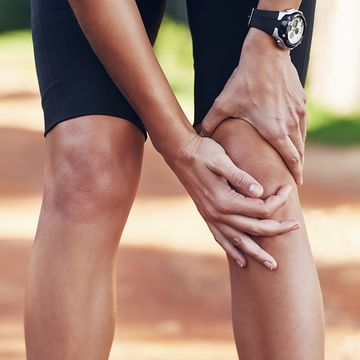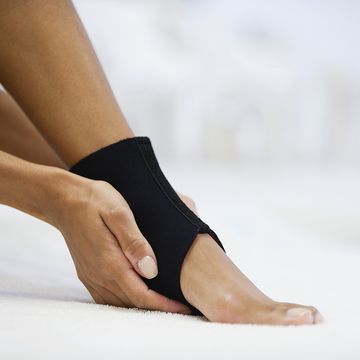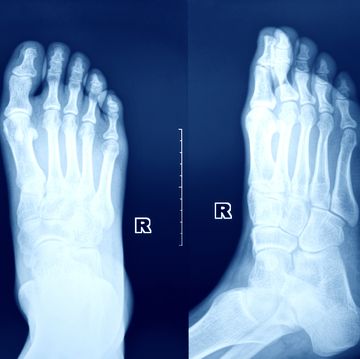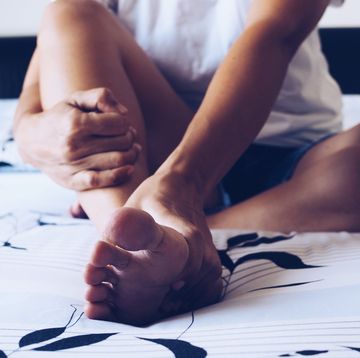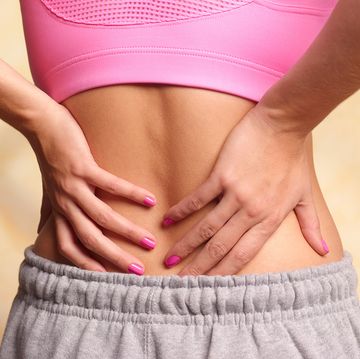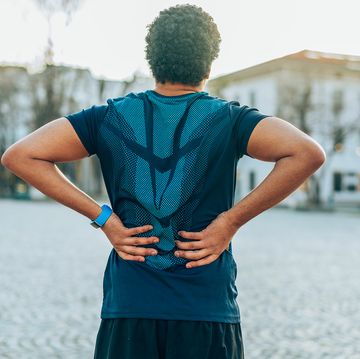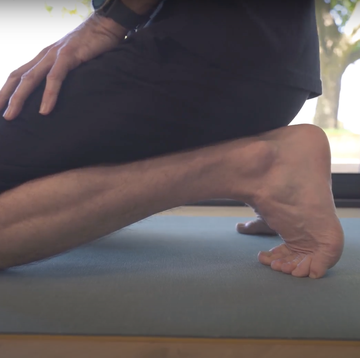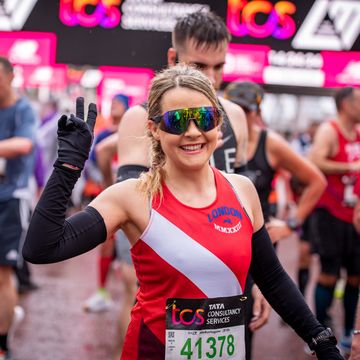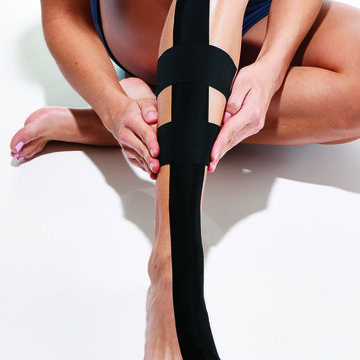Runners may well suffer from a multitude of injuries, aches and pains but if you have regular joint pain, swelling or restricted movement then it could be a sign of arthritis.
Around 350 million people suffer from arthritis worldwide, 10 million of those in the UK. It impacts millions of lives daily and a large amount of research has been conducted into the best ways to manage it.
Exercise has been shown to be an effective treatment for arthritis. A report published in Geriatric Nursing concluded that 'a comprehensive exercise program should include stretching exercises followed by a range-of-motion program for joints, muscle strengthening, and aerobic exercise, if possible'. Unfortunately most adults with the condition do not incorporate a workout routine into their lives due to the pain, which further exacerbates the condition.
Meanwhile another paper published in the journal Clinics in Geriatric Medicine concluded that patients with arthritis could safely participate in an exercise programs and often found relief of pain and disability. But again, the most difficult problem facing practitioners was how to encourage people with arthritis to start and maintain an exercise program.
We spoke to chartered physiotherapist, Susie Martin, of Complete Pilates to understand the impact of exercise on arthritis, how to get started and how to manage the condition.
What is arthritis?
Arthritis is a condition that causes swelling and tenderness in a joint, usually in the hips, knees, fingers and thumbs. There are many different types, but most people will suffer from either osteoarthritis or rheumatoid arthritis. Other forms include psoriatic arthritis, enteropathic arthritis and reactive arthritis.
The main contributing factor to osteoarthritis is age; 10% of men and 18% of women over 60 will be affected. The knee joint is the most commonly affected, which is reflected by 18% of over 45-year-olds having been to see their doctor about symptoms consistent with knee arthritis.
Rheumatoid arthritis is less common than osteoarthritis. It also results in painful joints but whereas osteoarthritis is caused by the wearing away of the cartilage that caps the bones in your joints, rheumatoid arthritis is a systemic, autoimmune disorder meaning the immune system in the body attacks healthy cells by mistake, causing inflammation.
This type of arthritis often starts between 30 and 50 years of age, and women are more likely to be affected than men. In rheumatoid arthritis, the body's immune system targets affected joints, which leads to pain and swelling. The outer covering (synovium) of the joint is the first place affected. This can then spread across the joint, leading to further swelling and a change in the joint's shape. This in turn may cause the bone and cartilage to break down.
People with rheumatoid arthritis can also develop problems with other tissues and organs in their body.
What are the symptoms of arthritis?
Symptoms will vary depending on the type of arthritis but they can include joint pain, tenderness and stiffness, inflammation in and around the joints, restricted movement of the joints, warm red skin over the affected joint, and, weakness and muscle wasting.
But there are difference between the symptoms of osteoarthritis and rheumatoid arthritis.
'If we're talking about osteoarthritis, it's genuinely pain that gets worse when you move and better when you rest. You may also have symptoms of inflammation such as swelling and heat around the joints,' explains Martin.
'If you've got a rheumatoid arthritis condition, you're more likely to get really hot joints and it affects both sides of the body at the same time. You'll have more variable flare ups, which can sometimes actually get better with exercise, not worse,' she adds.
Is exercise good for treating the symptoms of arthritis?
Research tells us that exercise is one of the best ways to minimise pain from arthritis. However the pain itself often deters people from exercising.
'That leads to a bit of a vicious cycle because when you stop doing things you lose strength and flexibility in your muscles and that's actually something that helps to protect the joints' says Martin, who advocates an exercise regime including both weight and cardio training.
Why both? She explains: 'When the joint becomes diseased, you may get a bit more loosening of the ligaments and capsule tissue around the joint which is normally something that helps to keep it stable.
'What you want to do is to get your muscles strong, because they provide a bit of a shield to the joints. But also when you strengthen your muscles, you stiffen your ligaments and capsule tissue again. So that helps, again with protection of the joint. You also don't want to lose cardiovascular fitness so you want to still exercise to maintain your fitness for the other health benefits that it gives you.'
Is running good for people with arthritis?
Running could certainly be included in your program despite past fears that it could be detrimental to your knee cartilage. A 2018 study published in the journal Clinical Rheumatology concluded that lower intensity, shorter duration runs should not be discouraged in people with knee osteoarthritis.
If you do suffer from the associated pain of arthritis, and running doesn't make your pain worse significantly, there’s a case that the cardiovascular and psychological benefits can outweigh the risks.
A systematic review of research investigating rheumatoid arthritis and the impact of exercise published in the journal Joint Bone Spine found physical activity had favourable effects on bone, slowing radiographic disease progression in small joints and increasing bone mineral density at the femoral neck.
However, if running is affecting your knees or hips and is causing pain to flare up then you should consider your approach. This could include changing your weekly mileage or avoiding consecutive days of running. You may also look to switch to other forms of cardio which don’t load the joints, such as swimming or cycling. This really depends on your individual needs and what is manageable, advises Martin.
What is the best exercise to do if you have arthritis?
Before putting on your running shoes it is advisable to implement a programme of non-impact exercises first. 'If I was going to recommend a programme to someone who is suffering a little bit and they're not quite able to carry on with their normal running regime, I would definitely say that exercise in water is beneficial.' says Martin. 'That can be hydrotherapy exercises, so you can go to a warm water pool. Breaststroke can sometimes aggravate pain on the inner side of the knee, but other than that, it's great.'
Cycling is another great non load-bearing activity that you could try either with an exercise bike or bicycle. As for strength training, this should include the basics. You should isolate your quads with leg extensions and your hamstrings with hamstring curls. Bridging exercises and squats are also great options. If squatting is aggravating on your knees, as it often can, a leg press may be more comfortable. Starting with a low load for more repetitions similar to endurance training will likely be tolerated by your joints a bit better.
Pilates is also great way to supplement your training, as it has been found to be an effective treatment for patients with knee osteoarthritis. It also provides a full body stimulus using a low load similar to swimming or cycling.
When should I see a physiotherapist?
It is recommended that you see a physiotherapist as soon as you have a diagnosis. They are best suited to provide you with the correct information to make the right lifestyle changes needed to manage arthritis.
Martin says as soon as you have the diagnosis it is worth going to see one because they will take a full history. An initial, thorough consultation should last about 45 minutes. 'They'll take a proper history of how your symptoms are when they started, how they're affecting you' she says. 'They will also measure the time it takes to bring on the symptoms in your activities and the time it takes to go away so you get a really good pattern of where your symptoms are.'
'They really understand, and won’t give you a one size fits all approach. Then they should do a physical examination where they will test your muscle strength either manually or with machines and will look at those muscles in isolation to see which are the ones that you might need to work on,' she adds.
A physio can then provide you with a comprehensive, tailored routine. Since arthritis is something that cannot be cured, only managed, it is best to receive the appropriate advice as soon as possible.
A well-constructed training plan which is appropriate for your current activity level and severity of your condition should aid your arthritis. Running is unlikely to provide extra stress on your joints but if this does become a problem, don’t continue to overload yourself as it will only aggravate the issues over time.


